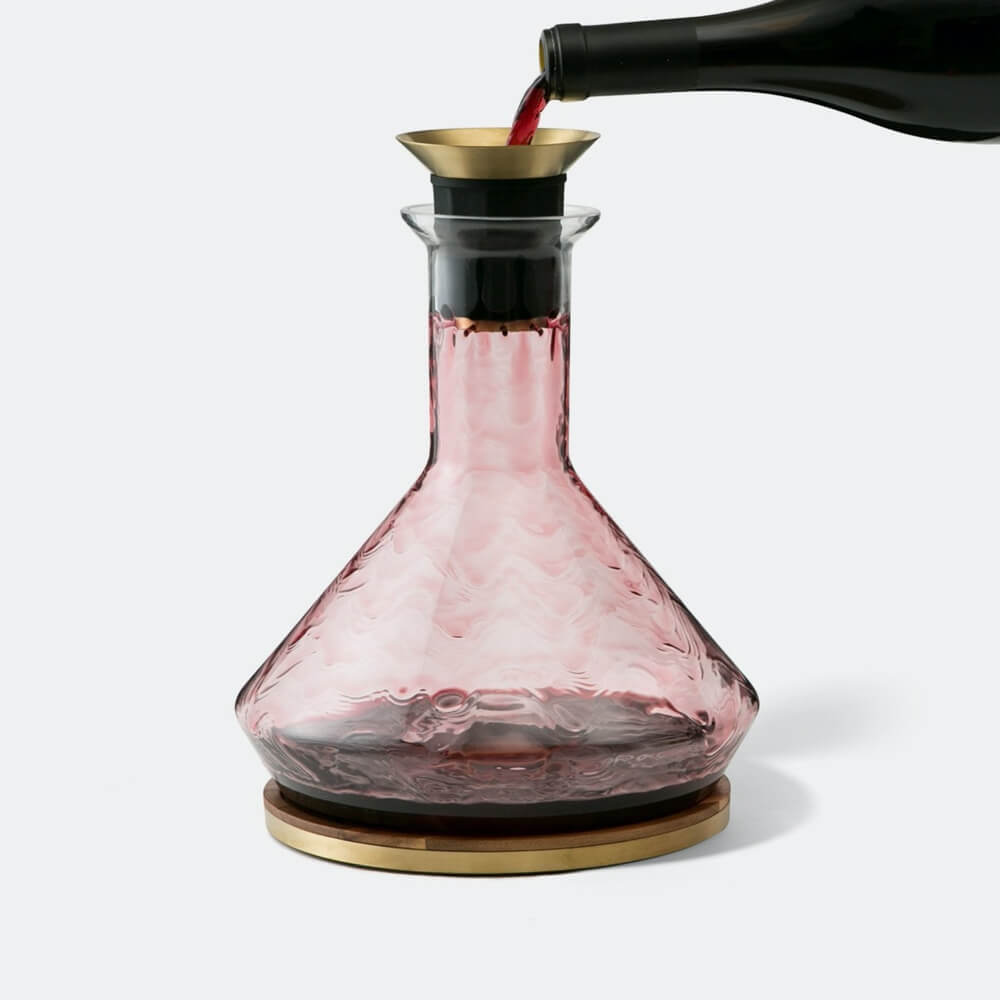How to Decant
If it's a young wine (anything less than five years old) or a bottle you just received, simply open and pour into your decanter. If your bottle has been stored horizontally for some time, sit it upright for a full day prior to decanting (allowing any sediment to settle at the bottom of the bottle). Pour the wine into the decanter at a steady pace and stop decanting if you see any sediment approaching the neck of the bottle. Tilt the bottle back to upright, then start again. Then let it sit for 15 to 30 minutes before serving.














